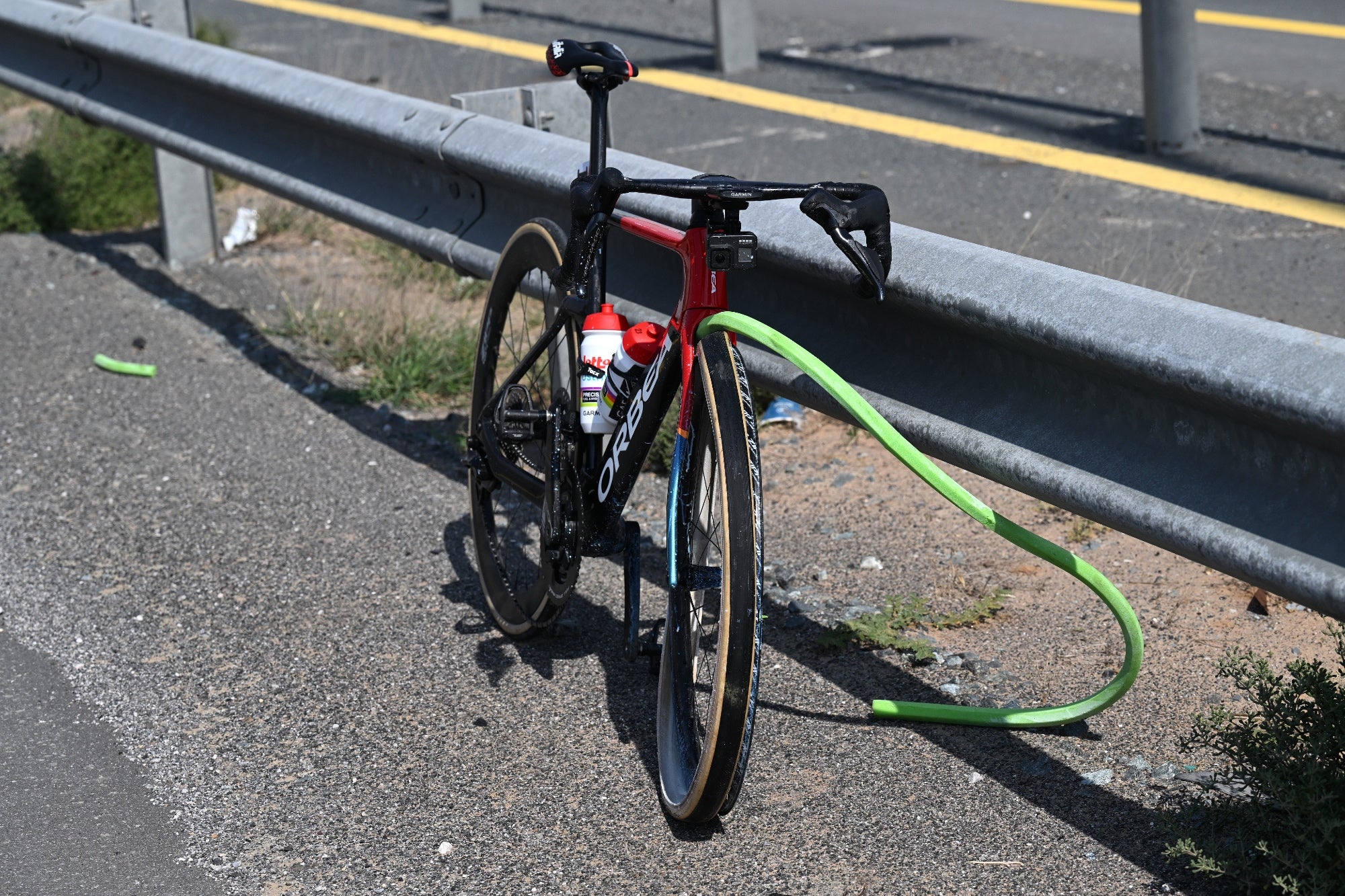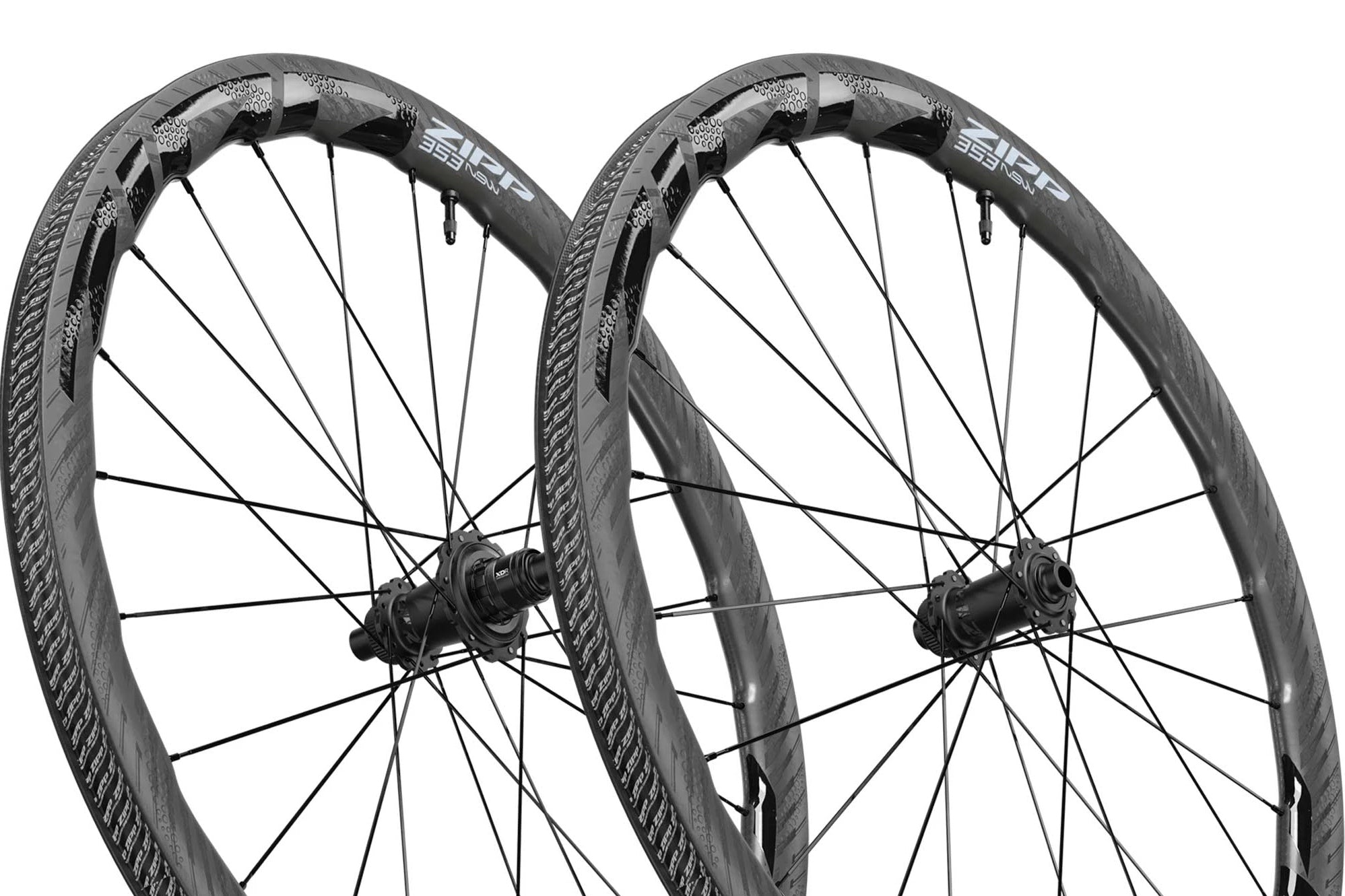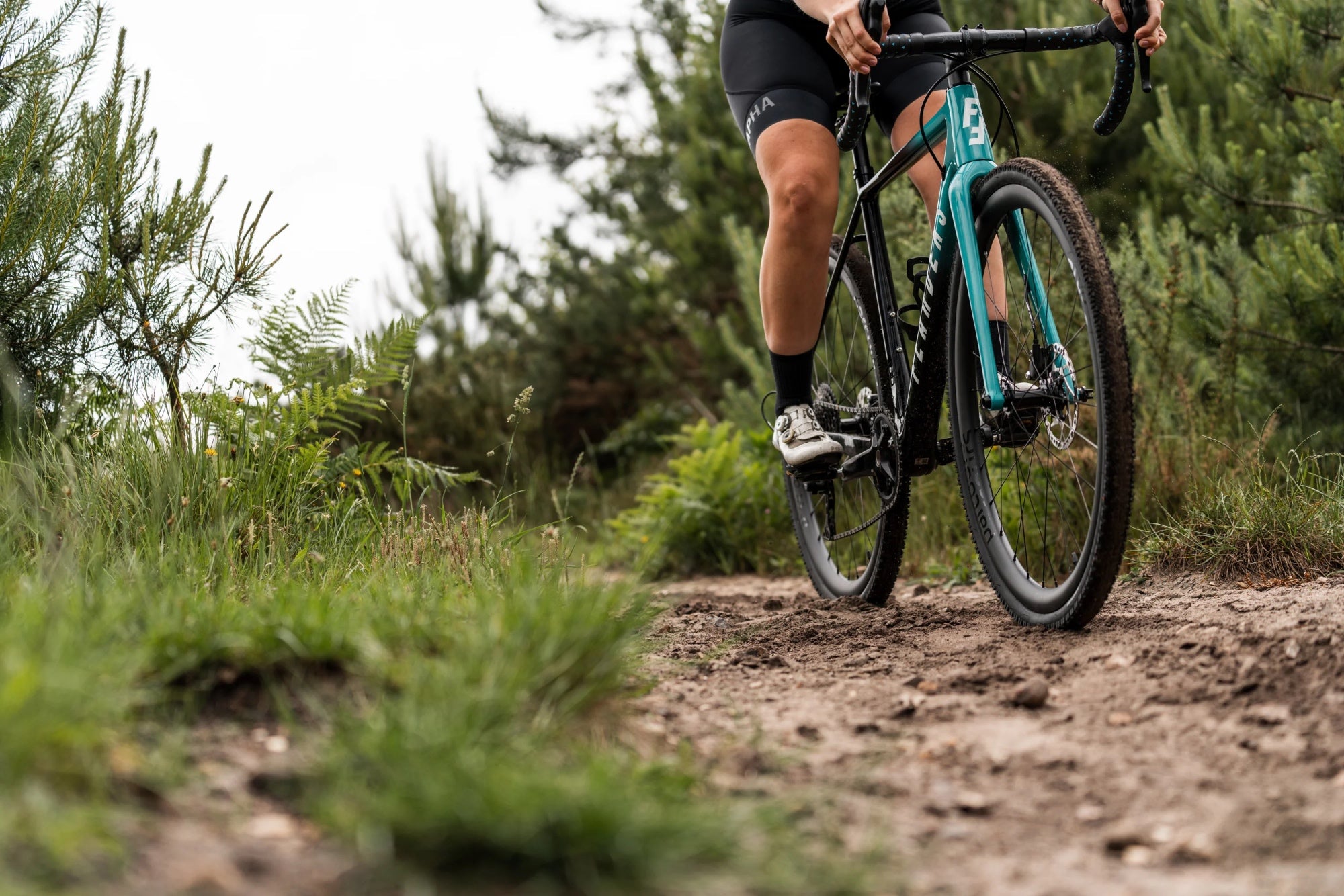Thomas De Gendt’s bizarre crash at the UAE Tour, in which his tyre came off, springing the tubeless foam liner out of the rim and into his fork, has led to a potential bigger tangle between the professional cyclists’ association – the CPA – and the manufacturers of hookless rims.
Additionally, the UCI has issued a statement announcing that "in light of recent incidents involving the use of hookless rims and tubeless tyres in professional road cycling, the Union Cycliste Internationale has decided to study the situation as a matter of urgency with a view to taking a rapid decision in the interest of rider safety."
While De Gendt himself had no idea what he’d hit, and asked on social media whether any images existed, CPA president Adam Hansen was convinced that his Vittoria Corsa TLR tyre had detached from the hookless rim of his Zipp 353 NSW wheel due to the pressure exceeding the maximum recommended.
“This crash is why the CPA are 100% against hookless rims,” he told Velo. “The maximum PSI these hookless tyres can have put in them is 73, and if you hit something for sure it goes above the maximum 73 psi rating on impact. That is why tyres are coming off.”
He continued: “We have heard from some teams that they have put tyres on before, they left them out in the sun and their tyres just pop off.”

Image: Getty Images
But statements from both Vittoria and Zipp insisted the crash was caused by a rock, with Vittoria noting that “it is crucial to clarify that the rim's failure resulted from an impact with an object, in this case, a rock, and is unrelated to the hookless rim design. The intensity of the impact caused the rim/wheel to break in a manner that prevented the tyre from staying securely in place. The force was so severe that it tore apart the tyre insert.”
A number of wheel manufacturers including Enve and Giant/Cadex are producing hookless rims for road riding and almost every major tyre manufacturer has a compatible road tyre. So what are the facts? Are hookless rims a liability in road racing – and are they safe for the consumer?
What is a hookless rim?
A hookless rim is exactly that – a rim that doesn’t have the hooks of the more traditional clincher rim that capture the tyre beads. The vast majority of pneumatic tyred vehicles use hookless, tubeless tyres, from HGVs to mountain bikes.
The pro peloton rarely used clinchers and inner tubes: teams ran glued-on tubular tyres and tubular rims up until relatively recently. A big advantage of a ‘tub’ that was glued to the rim was that if it punctured it was still possible not only to stay upright but also to ride it flat until the team car arrived with a spare.
But that all changed once road tubeless was proven to be faster, and pro teams have mostly switched from tubular to tubeless.

Image: Enve
Initially tubeless rims were ‘hooked’ and so could be inflated to standard road pressures. But the hookless design has a maximum recommended pressure of 5 bar or 73 psi, as determined by ISO and ETRTO (European Tyre and Rim Technical Organisation) committees, and wheel brands such as Zipp – whose wheels De Gendt was using when he crashed, are quite definite that this must not be exceeded: “Zipp's hookless wheel and tire systems should never be inflated to more than 5 bar (73 psi),” the SRAM-owned US brand states on its website.
When I spoke to Zipp’s product manager Bastien Donzé three years ago – he has since moved to work for Goodyear – he explained: “There are a number of misconceptions about hookless rims. First is that hooks on the rim are necessary to ensure safe retention of the tyre. Our testing shows that tyre burst pressure or tyre blow-off is very similar on hookless rims to hooked rims.”
“The maximum pressure rating is not because 73 psi is the limit of the wheel but because that's what's imposed by ISO and ETRTO.”
Hookless rims don’t need hooks to retain the tyre because once in place on the rim and inflated, the diameter of the bead of a hookless-compatible tyre is smaller than that of the rim measuring from the tops of the rim walls.
Not so long ago choosing a hookless rim meant limiting your tyre choice, with Continental and Vittoria, two major brands, taking time to develop compatible tyres. But now the Conti GP5000S TR and Vittoria Corsa Pro TLR have left many riders and teams with no reason not to go hookless.
What are the advantages of hookless rims?
There are several advantages of hookless that are quoted by its proponents. The first is that the hookless rim and tyre sidewall is more aerodynamic because it eliminates the lightbulb profile of a tyre on a hooked rim. The airflow is less likely to detach from the leading edge of the tyre.
The second is that a hookless rim with straight walls is stronger and more resistant to impacts since the walls can be thicker and the carbon will flex in a more natural way compared with hooked.
And the third is that manufacturing a hookless rim is more efficient – and some critics of hookless claim it’s cheaper too. It’s claimed to be more sustainable too since a steel mandrel can be used inside the rim that can be used for thousands of cycles whereas moulding a hooked rim requires a disposable bladder.
Are the advantages of hookless worth having?
I asked Dov Tate, the founder of wheel brand Parcours, for his opinion on De Gendt’s crash and then to evaluate the supposed advantages of hookless rims for the road. Parcours makes hookless gravel wheels – and here, says Tate, the advantages are much more obvious. Parcours uses a different, more flexible resin for the edges of the rim in order to make it more impact resistant. That’s not possible with hooked rims, since the material has to be as rigid as possible.
Commenting firstly on De Gendt’s crash, he says: “Truthfully I don’t really have a massive amount of insight into the specific incident, mainly because I don’t think even the rider is quite sure what happened. The “official” line of saying he hit a rock seems odd given the road surface and also lack of clear visual damage to the rim afterwards. Saying that, it’s also not a given that it was 100% down to a hookless setup failure.”

Image: Zipp
Last year Parcours put together an explainer in which they also addressed from their perspective the advantages and disadvantages of hookless.
Is hookless more aerodynamic in Parcours’ opinion? “Whilst it is likely that some aero benefit can be derived from a hookless rim design, our own testing shows that when comparing two rim designs that are identical in all respects other than one being hooked and the other hookless, there is no material difference in aero performance (<0.1W @ 48kph).”
And as for the increased strength of hookless: “Impact resistance is particularly important for off-road riding where lower tyre pressures and rougher surfaces make it more likely that you will “bottom out” and impact the rim. This makes a hookless rim very well-suited for off-road or gravel use.”
Is hookless more efficient and cheaper to make? “Whilst costs are reduced, it’s debatable as to whether this is always passed on to the customer.” In the past Tate has told me that the biggest saving with manufacturing hookless will be in quality control since there's less to go wrong. “You can be more precise with your manufacturing in hookless. We don't have a very high reject rate but if you have a higher reject rate you will save more money by going hookless.”

Image: Parcours
Regarding the inflation pressure limit: “For a road setup with narrower tyres, the 72.5psi pressure limit may not be suitable especially for heavier riders. In our opinion, for road use and with narrower (<32mm) tyre widths, a hookless rim may not be suitable for all riders. However, for gravel use, where wider (>35mm) tyre width are widely used and where the majority of riders are already running a tubeless setup, there is less of a downside.”
Despite the crash, the cause of which is still debated, it’s highly probable that De Gendt’s mechanic followed the ETRTO guidelines and didn’t overinflate his tyres, and we know that the 700x28c Vittoria Corsa Pro TLR he was running is compatible with Zipp’s hookless rim because it’s included in Zipp’s compatibility chart
But is the average rider who fits and inflates their own tyres always aware of the maximum recommended inflation? Tate says: “We actually ran a pretty extensive survey of riders last year to get a feel for where the average rider stands on all things tubeless and hookless. The fact that we often live in a bubble where we’re so immersed in all things tech means it’s easy to overlook the fact that not every cyclist spends their days reading ETRTO guidelines.”
He continues: “Given the fact that some really experienced tech minds are confused as to what is and isn’t safe and also what the safety margin truly is, it does scare me that we’ve no doubt got plenty of people riding around without even knowing that their wheels are hookless, let alone the potential implications of not following guidelines that they’re not aware of.”
Are mini-hooks the answer?
Not all new pro-level racing wheels are hookless by any means and not all racing tyres are hookless compatible. Roval is sticking with hooks. The new Black Inc 48/58 wheels being used by Israel-Premiertech use mini-bead hooks, as do Campagnolo’s new Bora UItra WTO and Bora WTOs, released in January. Roval road wheels also have hooks.
Campagnolo even uses the mini-hook design on its latest gravel wheel, the Levante: “The small dimensions of mini-hook guarantee a much cleaner transition between the rim and the tyre. Like a hookless rim, it avoids a ‘lightbulb’ shaped profile when using larger tyres, providing enhanced stability and grip benefits. Mini-hook also provides added security when using smaller volume tyres at higher pressures in comparison to a hookless rim. This system complies with ETRTO clincher and tubeless standards so Levante wheels can be teamed with your favourite rubber, whatever the brand.”
In conclusion, whether or not hookless rims should be banned from the pro peloton is a different issue from whether they are safe to ride by the general public. In De Gendt’s case, it seems certain that had he been riding tubulars and not hookless tubeless, he wouldn’t have crashed. Only in very rare cases does a tubular detach from the rim, and it’s more likely to happen in a corner. If it punctures because it hits a foreign object when riding in a straight line, it stays on.
For the general public who don’t ride tubulars as a rule, the choice is between more traditional hooked rims – tubeless or tubetype – and hookless. Tate says: “A not insignificant number of our riders continue to prefer either a tubed setup and/or tyre pressures of over 72.5psi, so a hooked rim design will allow for this."
He continues: "We have recently seen a number of instances of either confusion over ETRTO guidelines or issues with hookless rim setup that suggest the average [road] rider is not yet ready to consider the transition to a hookless rim. Until the industry (ourselves included) is able to both deliver a significant performance benefit and also educate our riders to a sufficient degree, we would continue to offer our road wheels with a hooked rim design.”
Meanwhile Enve, one of the well respected wheel brands to push hookless from the beginning, concludes: “In summary, hookless is for riders who want to enjoy the performance benefits of the modern road, gravel, and mountain bike wheel and tyre technologies. While there is much progress to be made still in terms of tyre and rim manufacturers cooperating to ensure tyres are safe for use with hookless type rims, many tyre manufacturers are making excellent tyres that have proven to be reliable and safe when paired with our hookless designs.”
So, should hookless be banned from the pro peloton? There's no doubt that a punctured tubular in a fast-moving peloton is much safer and easier to control than a punctured hookless/tubeless tyre and the UCI will be aware of this. Are they safe for the rest of us to ride? Yes, but they're much less foolproof than hooked setups – to ensure safety it's crucial to be aware of what we're riding exactly and what guidelines need to be followed.






























